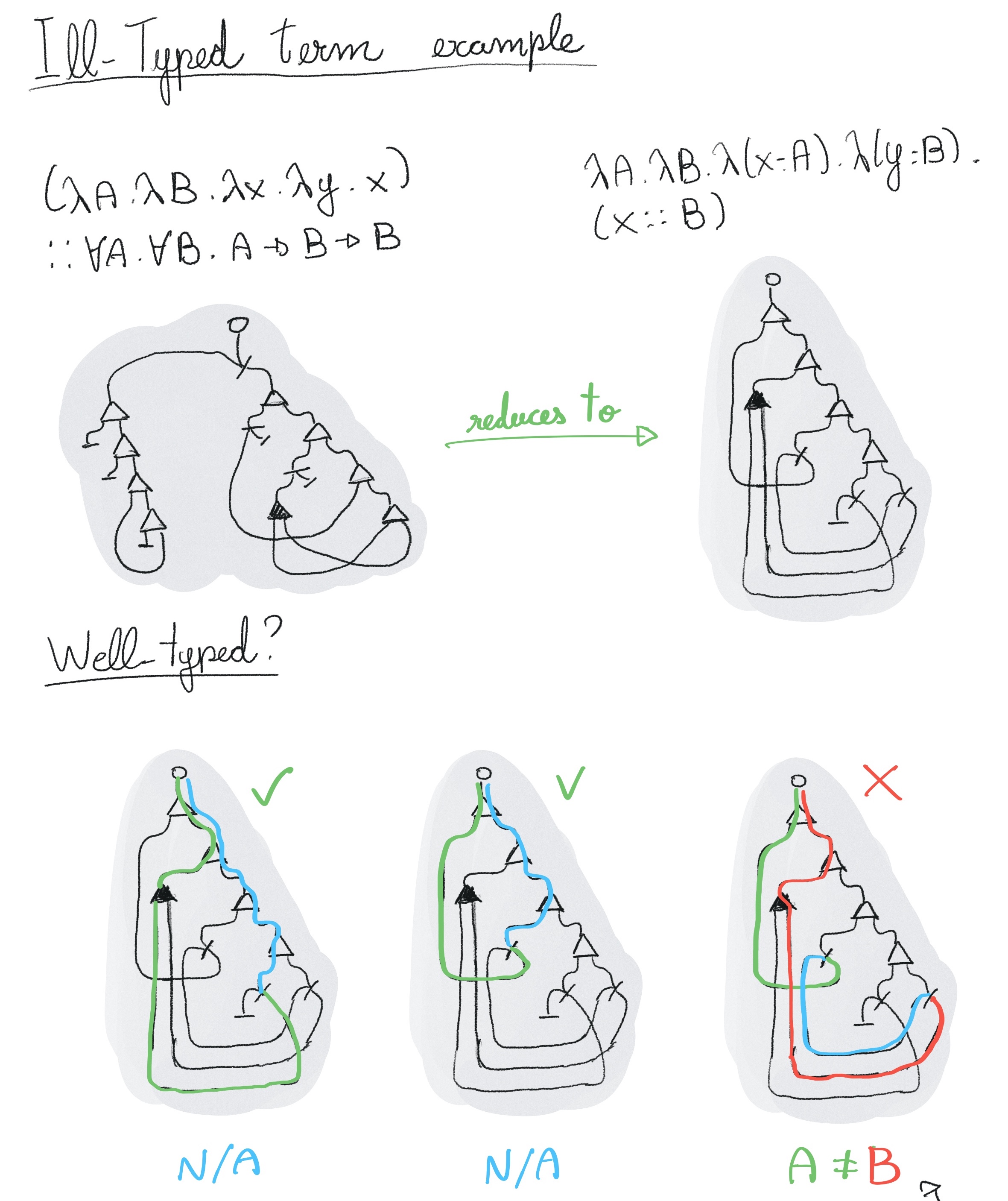Disclaimer: this is a work-in-progress. The claims made in this paper are unchecked, and work is ongoing to explore, formalize and prove them rigorously. Take this as a brainstorm of ideas and no more than that. This approach could or (more likely) could not work, but exploring it may get us closer to answers. Come discuss these ideas in our Discord server, on the #HVM channel!
What is the simplest system capable of logical reasoning? By extending Interaction Combinators with a single new rule, "Decay", coupled with a global coherence condition that enforces equalities of paired nodes, we're able to construct a system capable of expressing propositions and checking proofs, similar to the Calculus of Constructions. This system presents itself as an extremely minimal "reasoning engine", with possible applications to program synthesis and symbolic AI.
Interaction Type Theory (InTT) is obtained by extending Symmetric Interaction Combinators (SIC) with a single new interaction rule, named Decay, which allows a combinator to collapse to a wire and an eraser, when it respects the coherence condition, which demands that both sides of its main wire are demonstrably equivalent. We also allow for arbitrary combinator symbols, rather than only two. And that's all. Below is a complete picture:
Notice the reduction rules are the usual ones on SIC, except for Decay, which
can only be triggered when its main wire respects the equivalence relation drawn
above. The red/green colors represent port locations, and 1,x, 2,x, x,1
and x,2 represent appending to a local stack. Essentially, this equivalence
relation dictates that all paths outgoing from a port produce the same
"execution", as defined by Yves Lafont [citation], which also coincides with
Damiano Mazza's observational equivalence [citation].
My hypothesis is that this minimal system is capable of encoding arbitrary types, propositions and proofs, in a way that is closely connected to the Calculus of Constructions. This is done by reserving a symbol for annotations (ANN), and then treating graphs connected to the main port of an ANN nodes as types. Then, any net whose all ANN nodes can decay (i.e., when the coherence condition is met) correspond to a valid proof in a logic emerging from Interaction Combinators. Furthermore, the process of decaying all ANN nodes corresponds to compiling, and the resulting process will recover the original, untyped net - i.e., the program that encodes the proof.
For example, below is a net corresponding to (λP. λx. x) :: ∀P. P -> P, a
simple "proof" on CoC (identity):
And below is a net corresponding to (λA. λB. λx. λy. x) :: ∀A. λB. A -> B -> B, which, this time, is an invalid (ill-typed) proof:
An attentive reader may have noticed that the picture above is lacking type inference rules, which are part of all existing type theories. This isn't an oversight: typing relations can be encoded on top of InTT, by providing introduction and elimination rules to the type being encoded, and proving these respect coherence. For example, below is an encoding for simple pairs:
Since these rules respect coherence, one can "extend" InTT with pairs without changing the core system. In the same way, by encoding the usual constructors of type theory, we can use InTT as a logical framework capable of dependent type checking. This system could be used as the core compilation target of a traditional type-checker, or as a more natural structure for program synthesis and symbolic reasoning.
Below are some encodings of important λ-calculus terms:
This "encoding-based" approach is flexible and powerful, as it gives InTT users the ability to use features that weren't present on the original formulation of the theory. For example, self-types, an important primitive discovered by Aaron Stump, which allows for inductive reasoning on λ-encodings, and even quotient types - both of which aren't expressive on CoC - can be encoded.





